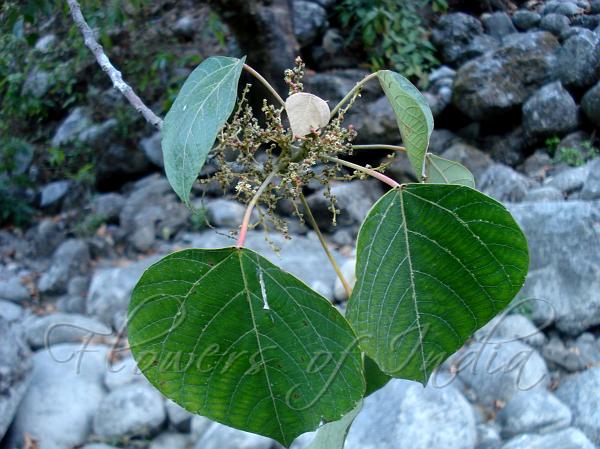|
| Blistery Macaranga |
|

|

| File size | 541687 |
| Original date | 12/4/12 2:50 PM |
| Resolution | 2048 x 1536 |
| Flash | Flash did not fire, auto |
| Focal length | 6.3mm |
| Exposure time | 1/50s |
| Aperture | 2.8 |
| Focus Distance | |
| Metering Mode | Multi-segment |
| Camera make | SONY |
| Camera model | DSC-W35 |
| Sensor type |
|
|
|
|
Photo: |
Botanical name: Macaranga denticulata Family: Euphorbiaceae (Castor family)
Synonyms: Macaranga pustulata, Mappa wallichii, Tanarius denticulatus
Synonyms: Macaranga pustulata, Mappa wallichii, Tanarius denticulatus
Blistery Macaranga is an evergreen tree up to 18 m
tall, characterized by trunk with shield shaped leaf scars. Exudate
watery becoming gum-like, pinkish-red. Bole straight, often tapering,
bark pale grey, smooth, with U-shaped ridges and shield -shaped leaf
scars. Twigs angled and ridged, glabrous or covered with minute hairs.
Exudate watery, becoming gum-like, pinkish-red. Leaves simple,
alternate and spiral, below densely red-brown hairy, becoming glabrous
or with minute hairs and yellow dots, glaucous, broadly ovate to almost
round, apex acuminate, base peltate, margin entire or shallowly toothed
with glands at the end of the teeth. Primary vein 3-5, radiating,
secondary veins obtuse, tertiary veins oblique.
Stipules present, narrow, falling off early. Flowers are arranged in a
many-flowered inflorescence, axillary, or just below the leaves,
unisexual, on different trees, flower-stalks up to 3 mm long. Fruit is
up to 0.8 cm long, capsule splitting into 2 sections, with sticky
yellow powder from glandular scales outside. Blistery Macaranga is
found in the Himalayas, from Nepal to Sikkim, Burma, Andaman, Thailand,
S. China, and Malaysia, at altitudes of 200-1400 m. Flowering:
April-June.
| Identification credit: Soni Bisht | Photographed in Uttarakhand & Assam. |
• Is this flower misidentified? If yes,